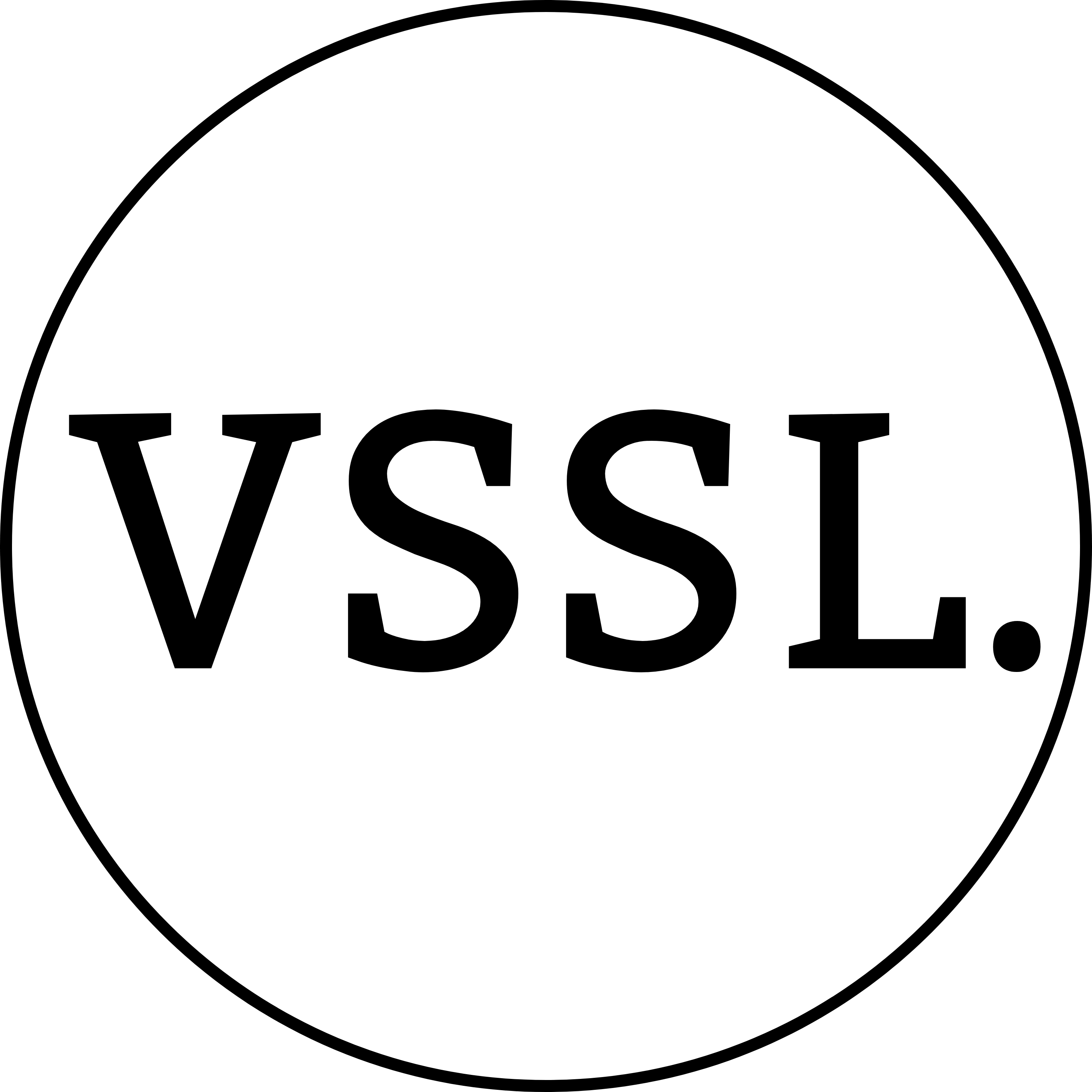Friday Art Find: Temporary Reception Center
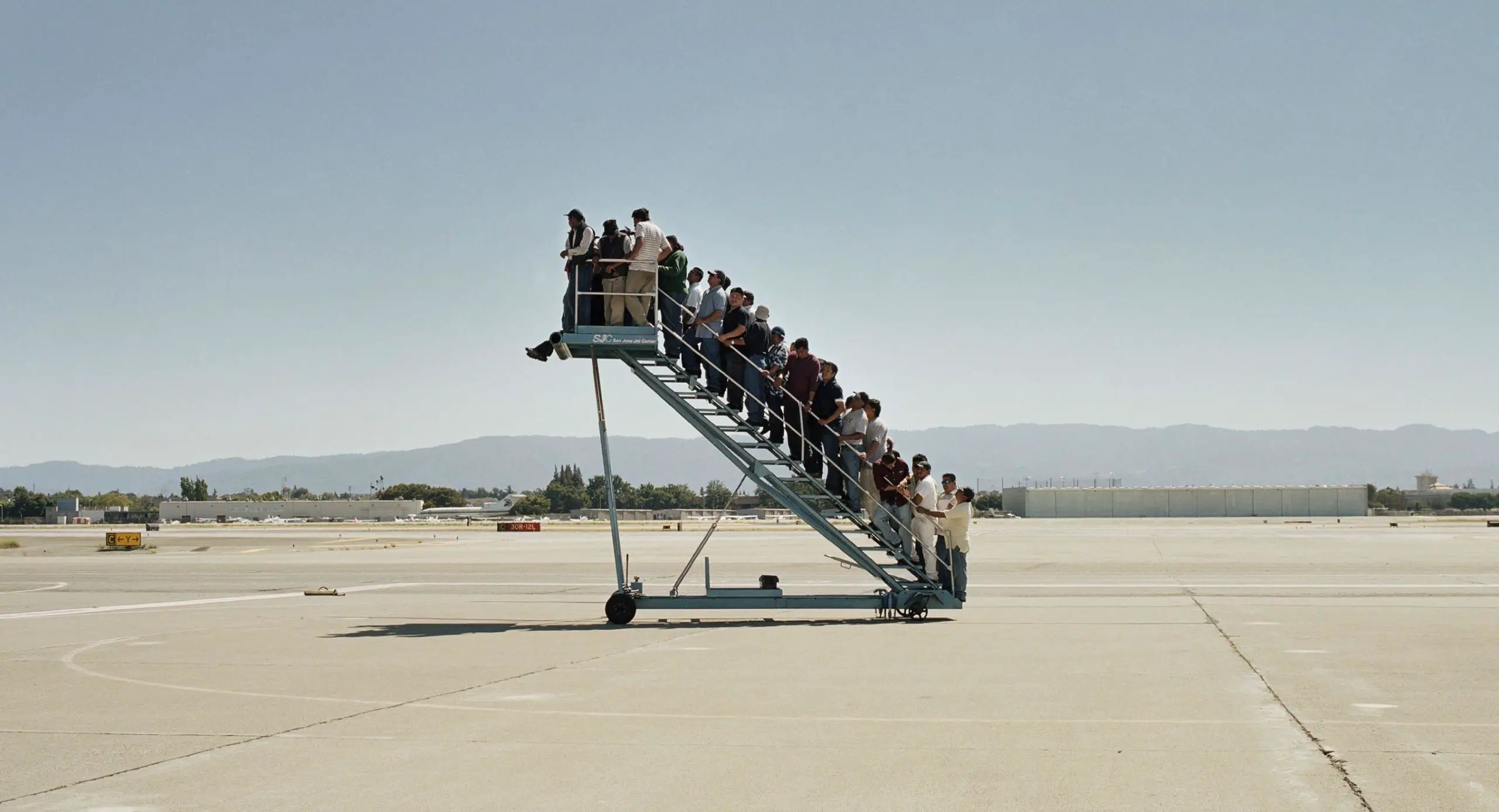
This film by Paci depicts a group of people, mostly Mexican, who stand on an aircraft stairway. The stairway in a Californian airport is a center where the migrants feel as though they are in a portal arriving after fleeing their respective countries. Paci uses the video technique to focus on the migrants’ faces and successfully captures their uncertainty. Public Delivery
Who builds the walls in society? What forces converge to create and maintain limbo spaces in between those walls, gaps where the ill-possessed can fall or be pushed?
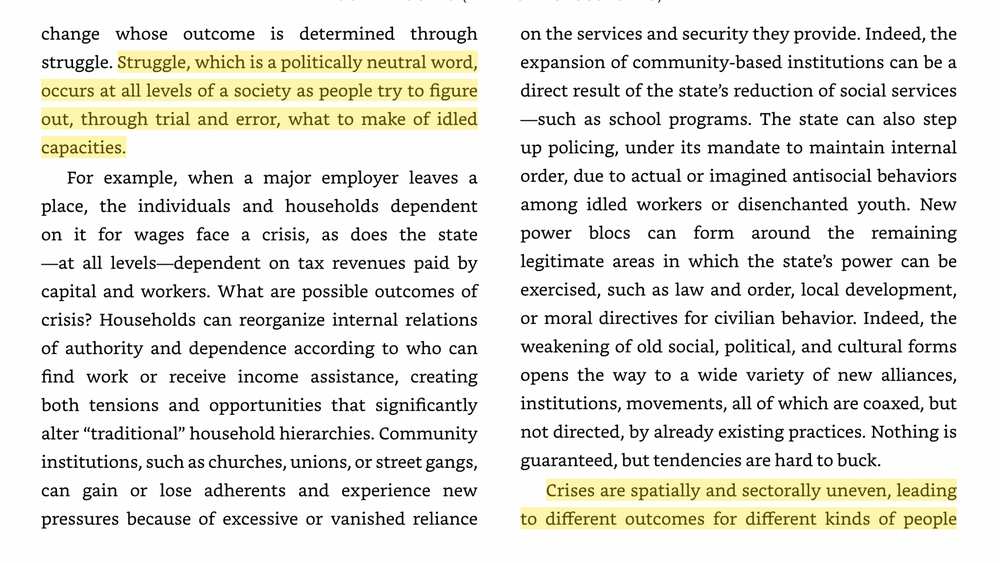
Ruth Wilson Gilmore, Golden Gulag
The power relation has three facets. The first is social and involves the use or threat of violence in the control of one person by another. The second is the psychological facet of influence, the capacity to persuade another person to change the way he perceives his interests and his circumstances. And third is the cultural facet of authority... (Patterson, p. 1)
From Orlando Patterson's groundbreaking comparative study Slavery and Social Death (1985)
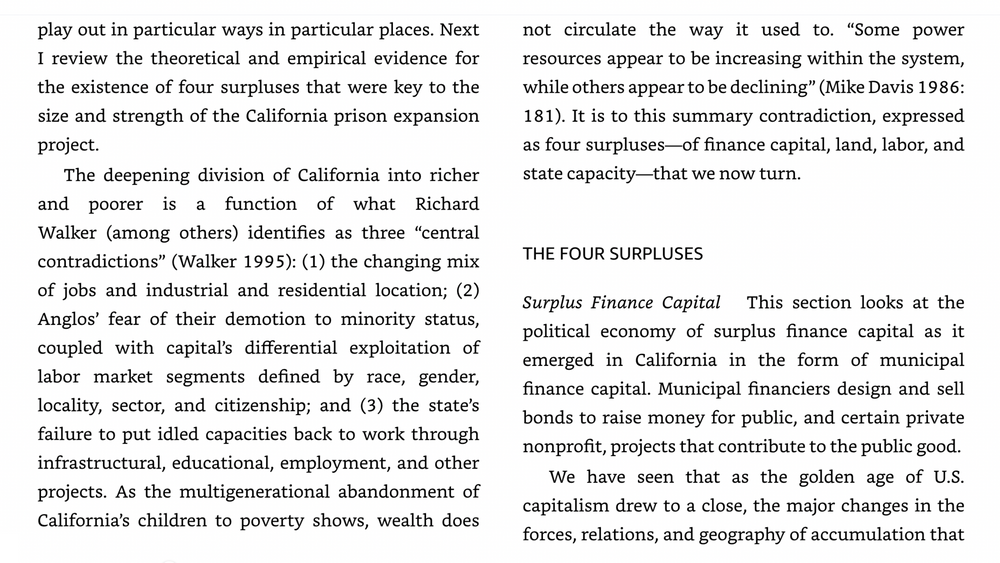
Ruth Wilson Gilmore, Golden Gulag
For Foucault, the self is discursively produced over time by being subjected to the regulatory power relations of the discourses that it is positioned within (Barker 2008; 225). The subject (the person, the self, one’s identity) is thus the product of history and power. Foucault’s concept of biopower describes the administration and regulation of human life at the level of the population and the individual body – it is a form of power that targets the population (Rogers et al 2013). This concept is helpful in that it connects identity to power and demonstrates how social categories are used to enact and allow state violence on certain subjects.
[...]
Thus, as Foucault notes, sovereign juridical power was in fact only a power to ‘take life or let live’,24 whereas biopower constituted ‘a power to foster life or disallow it to the point of death’.25
Global Social Theory
[...]
Thus, as Foucault notes, sovereign juridical power was in fact only a power to ‘take life or let live’,24 whereas biopower constituted ‘a power to foster life or disallow it to the point of death’.25
Global Social Theory
Archetypically, slavery was a substitute for death in war. But almost as frequently, the death commuted was punishment for some capital offense, or death from exposure or starvation.
The condition of slavery did not absolve or erase the prospect of death. Slavery was not a pardon; it was, peculiarly, a conditional commutation. The execution was suspended only as long as the slave acquiesced in his powerlessness. The master was essentially a ransomer. What he bought or acquired was the slave's life, and restraints on the master's capacity wantonly to destroy his slave did not undermine his claim on that life. Because the slave had no socially recognized existence outside of his master, he became a social nonperson.
This brings us to the second constituent element of the slave relation: the slave's natal alienation. Here we move to the cultural aspect of the relation, to that aspect of it which rests on authority, on the control of symbolic instruments. This is achieved in a unique way in the relation of slavery: the definition of the slave, however recruited, as a socially dead person. Alienated from all "rights" or claims of birth, he ceased to belong in his own right to any legitimate social order. All slaves experienced, at the very least, a secular excommunication.
Not only was the slave denied all claims on, and obligations to, his parents and living blood relations but, by extension, all such claims and obligations on his more remote ancestors and on his descendants. He was truly a genealogical isolate. Formally isolated in his social relations with those who lived, he also was culturally isolated from the social heritage of his ancestors. He had a past, to be sure. But a past is not a heritage. Everything has a history, including sticks and stones. Slaves differed from other human beings in that they were not allowed freely to integrate the experience of their ancestors into their lives, to inform their understanding of social reality with the inherited meanings of their natural forebears, or to anchor the living present in any conscious community of memory. That they reached back for the past, as they reached out for the related living, there can be no doubt. Unlike other persons, doing so meant struggling with and penetrating the iron curtain of the master, his community, his laws, his policemen or patrollers, and his heritage.
(Patterson, p. 5)
The threat of annihilation. If no one knows you, if society does not recognize you, do you exist? What is required for you to become a person as defined by the systems erected around us? To achieve a measure of security in all of it? Can you subsist if you don't attain those things?
The new biopower operates instead through dispersed networks – what in Security, Territory, Population Foucault names the dispositif.16 This dispositif of power works from beneath, from the ‘level of life’ itself,17 and, as Foucault earlier described it in Society Must Be Defended, ‘[i]t was a type of power that presupposed a closely meshed grid of material coercions rather than the physical existence of a sovereign’.18
Importantly, biopower did not replace repressive and deductive functions of power, but worked together with such technologies of power. Foucault writes:
“Deduction” has tended to be no longer the major form of power but merely one element among others, working to incite, reinforce, control, monitor, optimize, and organize the forces under it: a power bent on generating forces, making them grow, and ordering them, rather than one dedicated to impeding them, making them submit, or destroying them.19
However, significantly too, the structural functioning of biopower, as it operates through the dispositif where lines of power triangulate outwards, enables new kinds of resistance; resistance which can take place at the multiple points of contact which these lines of power traverse.20
Critical Legal Thinking
Importantly, biopower did not replace repressive and deductive functions of power, but worked together with such technologies of power. Foucault writes:
“Deduction” has tended to be no longer the major form of power but merely one element among others, working to incite, reinforce, control, monitor, optimize, and organize the forces under it: a power bent on generating forces, making them grow, and ordering them, rather than one dedicated to impeding them, making them submit, or destroying them.19
However, significantly too, the structural functioning of biopower, as it operates through the dispositif where lines of power triangulate outwards, enables new kinds of resistance; resistance which can take place at the multiple points of contact which these lines of power traverse.20
Critical Legal Thinking
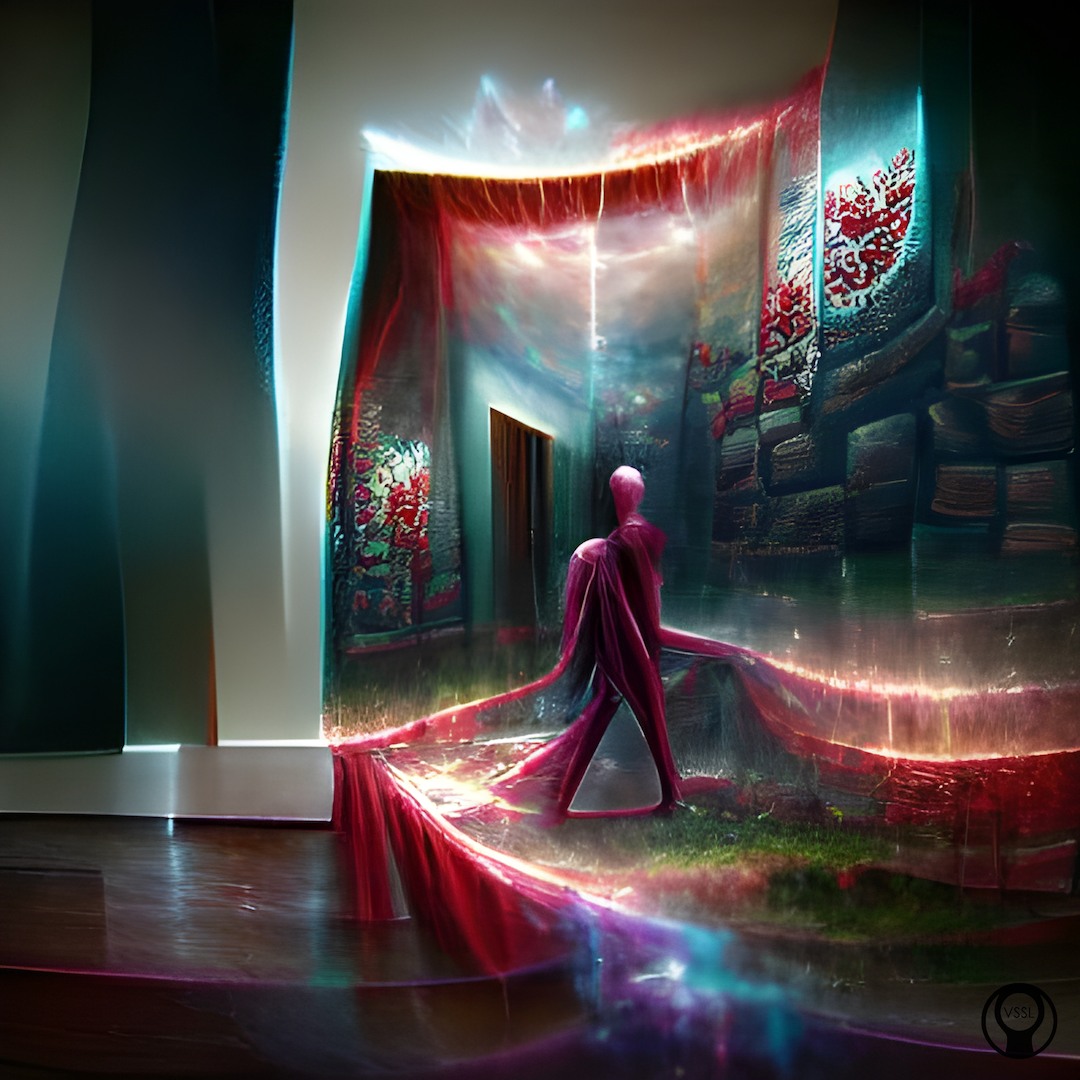
Adrian Paci’s artwork, Temporary Reception Center (2007), is a powerful take on the political themes of displacement. Paci, an Albanian artist, captures the drama of migrants, the denied hope, and the uncertainty of life in a new environment in this art piece.
With his work, the artist makes a statement on the refugee crisis and shows what happens in detention centers to paperless immigrants, whether they are awaiting receipt or deportation. It captures the temporary but harrowing experience of waiting with hope and hopelessness. Public Delivery
With his work, the artist makes a statement on the refugee crisis and shows what happens in detention centers to paperless immigrants, whether they are awaiting receipt or deportation. It captures the temporary but harrowing experience of waiting with hope and hopelessness. Public Delivery
Adrian Paci’s Temporary Reception Center – Hope for a better future
Adrian Paci – Centro di Permanenza Temporanea (Temporary Reception Center), 2007, 16:9 video projection, color, sound, 5’30’’ Introduction Adrian Paci’s artwork, Temporary Reception Center (2007), is a powerful take on the political themes of displacement. Paci, an Albanian artist, captures the dram…
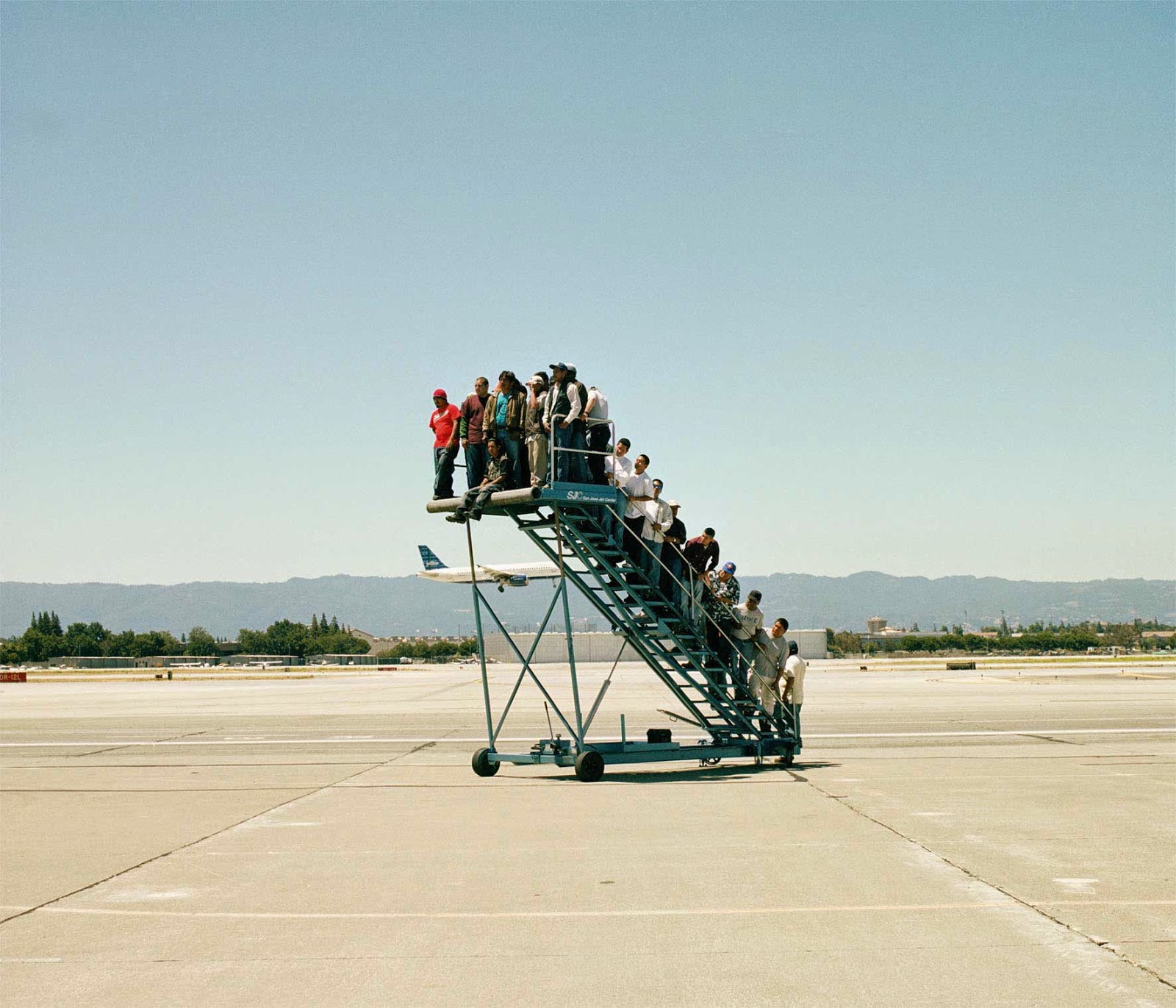
- Paci, Adrian. 2007. Centro di Permanenza Temporanea (Temporary Reception Center). [Video project]. Public Delivery. Retrieved from: https://publicdelivery.org/adrian-paci-temporary-reception-center/.
- Wilson Gilmore, Ruth. 2007. Golden Gulag: Prisons, Surplus, Crisis, and Opposition in Globalizing California. University of California Press. Kindle.
- Patterson, Orlando. 1985. Slavery and Social Death: A Comparative Study. Harvard University Press. Retrieved from: https://cominsitu.files.wordpress.com/2020/10/orlando-patterson-slavery-and-social-death_-a-comparative-study-1985.pdf.
- Chhibbe, Anish. 2007. Biopower. Global Social Theory. Retrieved from: https://globalsocialtheory.org/concepts/biopower/.
- Adams, Rachel. 2007. Michel Foucault: Biopolitics and Biopower. Critical Legal Thinking. Retrieved from: https://criticallegalthinking.com/2017/05/10/michel-foucault-biopolitics-biopower/.
